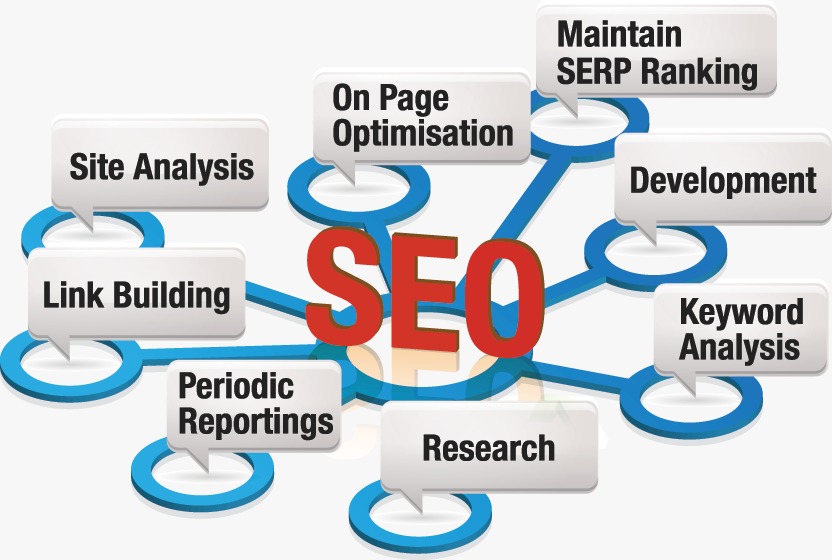A shocking truth underlies every winning SEO branding strategy: 59% of American searchers click only on results from brands they recognise. This fact underscores why the connection between your search visibility and brand identity is more important than ever.
In today’s digital world, where Google processes 5.9 million searches every minute, the need for effective SEO branding to stand out is more crucial than ever. Trust, which drives 81% of consumers to buy only from familiar brands, underscores the direct impact of your brand’s recognition on your bottom line.
SEO branding, beyond technical optimisation, builds a consistent digital presence that establishes authority and genuine connections with your audience.
This piece shows you how to build a robust SEO branding approach that gets results. We provide valuable strategies to enhance your brand’s visibility and recognition. You’ll learn everything from keyword research with brand intent to content that matches your values. Here’s a thought – if Google can’t find your business, do you exist in your potential customer’s mind?
Understanding SEO Branding

SEO branding combines search visibility and brand identity strategically. Traditional SEO focuses only on rankings, but SEO branding builds recognition and trust through search results.
What is SEO branding?
SEO branding leverages search engine results to boost your brand’s visibility and awareness. It takes advantage of searches from people who already know about you. Your digital presence accurately reflects your brand’s values when users search for your company or products.
Additionally, your brand name can become a valuable source of organic traffic. People who search for your brand name are usually ready to buy, which makes them high-intent users at the bottom of the sales funnel.
How SEO and branding work together
SEO and branding create a powerful partnership. Branding establishes a unique identity and fosters trust, while SEO enables potential customers to discover this identity in search results. A successful brand-building strategy positively impacts your SEO efforts by sending clear signals to search engines.
Google views your brand as trustworthy and popular when people frequently search for it. This has proven crucial for website rankings.
This partnership benefits both sides – SEO boosts brand awareness through better organic visibility, while a strong brand helps SEO by:
- Differentiation from competitors, making you more attractive to users and search engines
- Higher click-through rates as users recognize and trust your brand
- Easier link acquisition from other websites
- Enhanced E-E-A-T signals (Expertise, Experience, Authoritativeness, Trustworthiness)
Why SEO is essential for brand visibility
Even the strongest brands can’t reach an organic audience without SEO. Users tend to trust brands more when they appear on the first page of search results, especially in the top three positions. This is where the role of SEO in brand visibility becomes crucial, as it facilitates what’s known as ‘trust transference’.
SEO branding helps you reach the right audience at the right time. You show up when people actively look for solutions, and you offer by optimising for relevant keywords. Search engines begin to view your site as an authority as your SEO improves and you rank higher. This leads to enhanced visibility for various searches.
SEO gives your brand long-term benefits, unlike paid advertising that stops working when you stop paying. It continues to bring organic traffic for months or even years, providing a stable and reliable source of visibility and leads.
Core Elements of a Strong SEO Branding Strategy

Building a strong SEO branding strategy needs several core elements that work together. Each part contributes to building your brand’s presence in the digital world.
1. Keyword research with brand intent
Innovative keyword research goes beyond basic terms. It includes your brand name, products, and what makes you unique. Your keywords should align with your brand identity and the search terms users are likely to use. The right keywords establish a framework for content that aligns with your brand’s voice and values.
2. On-page SEO that reflects brand voice
Let your brand’s personality shine through every on-page element. Moz suggests adapting to keyword trends without losing your brand voice. Your title tags, meta descriptions, and headers should maintain your unique brand style while incorporating relevant keywords to enhance visibility.
3. Technical SEO for a better user experience
Technical SEO and user experience are closely intertwined. A well-designed website that loads quickly will provide users with an uninterrupted experience. Search engines reward this with better rankings. Your site speed, mobile-friendliness, and proper structure all help both technical SEO and user experience.
4. Link building with authority sites
Quality backlinks from trusted websites tell search engines your content has value. Focus on earning links from reputable sources that relate to your brand, rather than chasing numbers.
5. Local SEO for community presence
Local SEO is crucial for businesses targeting specific geographic areas. A complete Google Business Profile with accurate information significantly enhances local visibility. Businesses with detailed profiles appear more frequently in local searches based on relevance, distance, and prominence.
6. Content marketing aligned with brand values
Content that aligns with your brand’s values fosters stronger connections with your audience. This leads to brand loyalty and customer advocacy. Happy customers share good content with their networks naturally.
7. Long-tail keywords to reach niche audiences
Long-tail keywords are specific phrases with three or more words. They help you reach specific audiences with precision. These keywords have higher conversion rates (2.5 times higher than generic terms) and less competition. They help establish your brand as an expert in specific niches.
Building Brand Trust Through SEO
Trust is the lifeblood of any successful SEO branding strategy. The digital world shows that 88% of users won’t return to a website after a bad experience. This makes trust-building crucial for achieving long-term brand success.
OOptimisingfor user experience
Your brand’s credibility depends on how visitors see your user experience. Page load speed and mobile responsiveness have a significant impact on trust. Studies show that slow-loading pages can reduce conversions by up to 20%. A well-laid-out site architecture helps visitors find information quickly. This reduces bounce rates and improves engagement metrics. Your SEO branding should focus on:
- Creating intuitive navigation with clear menu structures
- Ensuring pages load within 1-2 seconds on desktop
- Implementing responsive design for all devices
- Making your site available to users with disabilities
Creating consistent and helpful content
Brand consistency fosters familiarity and instils confidence across all digital touchpoints. Your branding, which naturally aligns with SEO efforts, makes potential customers more likely to find and interact with your content. Search engines understand and trust your narrative more effectively through this coherent presence, which enhances your search engine ranking.
Your content should maintain uniformity in logos, visual elements, brand voice, and messaging strategy. Customers become loyal promoters as they learn what to expect from your brand.
Encouraging and managing online reviews
Reviews serve as powerful trust signals for search engines and potential customers. Approximately 63% of customers always check online reviews before making a purchase. However, only 44.6% are more likely to visit a business that responds to negative reviews.
Quick responses to both positive and negative feedback show your dedication to customer satisfaction. This creates meaningful connections with your audience. Studies reveal that 77% of travellers book more often when they see customised review responses. A good SEO branding approach treats every review as a chance to showcase your brand’s values and reliability.
Measuring and Improving Your SEO Branding Efforts
Metrics are the foundation of any effective SEO branding strategy. Companies navigating without proper metrics are essentially working in the dark, unable to determine success or needed adjustments.
Tracking branded search volume
Branded search volume indicates the frequency with which consumers search for your specific brand name or branded terms online. This metric directly reflects consumer interest and brand awareness. Your company’s growing recognition shows through increasing branded searches, which often align with successful marketing campaigns.
Google Trends or SEMrush helps gather monthly search data for your brand name and related terms. Your market position becomes clear when you measure your branded search volume against that of your competitors. Sites with high brand search volume but fewer backlinks perform better than those with numerous backlinks but low brand recognition.
Monitoring direct traffic and engagement
Direct traffic occurs when visitors type your URL into their browser or use bookmarks, rather than finding you through a search engine—this strong sign of brand awareness that consumers recognise and recall your company. Google Analytics helps track direct traffic patterns and assess metrics like bounce rate and time spent on site to understand user engagement. Your brand awareness grows with consistent increases in direct traffic, which validates your SEO branding approach.
Using tools to measure brand mentions
Brand mentions covering all references to your business online, from social media conversations to news articles. These mentions help learn about your brand reputation and customer sentiment. The most useful monitoring tools include:
- Google Alerts – Free service providing email notifications for brand mentions
- Sprout Social – Complete social monitoring with analytics
- Mention – Up-to-the-minute tracking across social networks and websites
- Brandwatch – Largest monitoring system for print and social media
Analyzing share of voice in your niche
Share of voice (SOV) represents your brand’s percentage of market conversation compared to competitors. This metric helps assess your competitive position and brand visibility. SEO-specific SOV tools, such as Semrush, track your search visibility against competitors and display your click share for relevant industry keywords. Regular SOV monitoring reveals which content appeals to your audience and highlights opportunities to surpass rivals.
Conclusion
SEO branding connects technical optimisation with brand identity. This guide illustrates how brand visibility impacts consumer trust and purchasing decisions. Your business needs strategies that match your unique brand identity with your search presence.
Numbers tell the story clearly – almost 60% of users click exclusively on recognised brands. A whopping 81% buy only from brands they trust. Your digital visibility links directly to your revenue. Every part of your SEO branding strategy helps build this recognition.
Brand-focused keyword research, voice-aligned on-page optimisation, and technical SEO lay the foundations for success: your link building, local SEO work, and value-driven content turn browsers into loyal customers.
Digital marketing runs on trust. Better user experiences, regular content updates, and intelligent review handling build this trust foundation. Remember, poor experiences drive away 88% of users permanently.
Your strategy’s success depends on proper measurement. Brand search volume, direct traffic patterns, and voice share tracking show how well you’re doing. These metrics help you improve continuously.
Building your SEO brand takes time and dedication. Quick results aren’t realistic, but the long-term rewards beat short-term paid advertising gains. Your business should stand out to both search engines and customers.
Will customers find your brand when they need solutions? Start using these SEO branding strategies now. Your business will outshine competitors and build lasting customer relationships.








